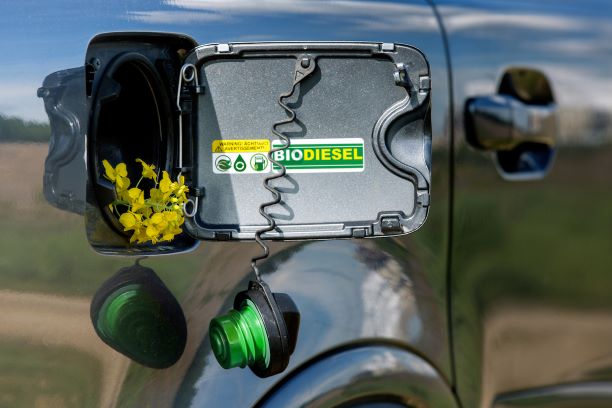

The biofuels industry in the US is booming, and a fresh surge in production is just around the corner thanks to increased demand for renewable diesel and sustainable aviation fuels (SAFs) in the coming years. The new Rystad Energy research predicts that the biofuel production in the US will increase by about 53% by the middle of the next decade, jumping from 850,000 barrels of oil equivalent per day (boepd) in 2023 to about 1.3 million boepd in 2035. Domestic output is expected to surpass 1 million boepd as early as 2026.
Rystad Energy held that as governments and industry strive to decarbonize the transportation sector, the role of biofuels will continue to expand. Widely considered a core component of the energy transition, these plant-based alternatives to traditional fuels like gasoline and diesel could play a fundamental role in limiting emissions from road vehicles, shipping and aviation.
For instance, SAFs are almost identical to conventional jet fuel but produced using plant-based feedstocks like fats, oils and agricultural and municipal waste. As their usage requires minimal aircraft and logistical modifications, SAFs could significantly reduce the aviation industry’s emissions impact, mentions Rystad Energy.
Looking ahead to 2035, the US is expected to dominate production of both ethanol and diesel, as well as advanced biofuels.
Rystad Energy say that the US will produce about 1.3 million boepd of biofuels in 2035, 40% of the total global output. Of that 1.3 million boepd, advanced fuels will account for about 50% of domestic production. Europe and Brazil will be the next biggest producers, but significantly behind the US.
As per the Rystad Energy research, Europe is expected to produce about 580,000 boepd in 2035, while Brazil’s output will reach 510,000 boepd.
It held, “Our production forecast uses our base case expectations for technology advancements, electric vehicle (EV) adoption and the availability of biofuel feedstock and assumes existing policy support remains in place.” Rystad Energy has also mapped out two other scenarios, a High Case and a Low Case:
“Biofuels look likely to play a crucial role in the future low-carbon energy world, and the US is uniquely positioned to capitalize. The market’s momentum has gathered in recent years, and its growth is assured through the end of this decade, but some uncertainty remains into the 2030s,” says Artem Abramov, head of clean tech research at Rystad Energy.
Rystad Energy’s flagship event, the Energy Transition Marathon, is coming up on 10 April. Sign up now to hear from our in-house experts and industry thought leaders from companies at the forefront of the energy transition.
Further Impact
Advanced biofuels such as renewable diesel and SAFs are the key swing factors impacting the market’s future. Renewable diesel production has snowballed in recent years, increasing from 25,000 barrels per day (bpd) in 2020 to an expected 220,000 bpd this year. Consumption in the US topped 200,000 bpd during some months in 2023, and this growth story looks set to continue for some time. In all three scenarios, the report expects renewable diesel production to grow significantly until 2030, after which the curves diverge.
Rystad Energy said that one of the biggest hurdles to strong renewable diesel growth is feedstock availability, primarily soybeans. Early production capacity expansion has been driven by the same first-generation vegetable oil feedstocks, which are used by biodiesel producers and the food production industry. For example, consumption of soybean oil for biofuel production doubled from about 600 million pounds per month in 2017-2019 to a staggering 1.1 to 1.3 billion pounds in the second half of 2023. The research estimated that 2024 will be the first year in US history when biofuel production will account for more than 50% of all soybean oil consumption in the country. Competition for canola and corn oil is also growing, and relying on these first-generation feedstocks could severely limit the market’s growth potential.
The research finds that SAFs have yet to take off in the same way, but they are expected to catch up in the coming years. As these fuels gain popularity, the petroleum industry is looking to convert existing refineries to produce renewable diesel and SAF by modifying existing infrastructure. This is faster and more economical than building new facilities, helping to quickly expand production capacity.
Looking at the supply project pipeline, commercial airline demand and the continuation of policy support for SAF production, Rystad Energy expects domestic US production to increase from 1,700 bpd last year to about 190,000 in 2035. Even in the low case, SAF production would increase to around 110,000 bpd, the report says.
1. The mandate for blending Compressed Biogas (CBG) with natural gas has come into effect…
Andhra Pradesh is striving towards greening its energy sector with quite some speed. In a…
With an objective to bolster India’s green energy goals, a Tripartite Agreement has been signed…
The Union MNRE Minister Pralhad Joshi launched the Green Hydrogen Certification Scheme of India (GHCI)…
India’s energy conglomerate Bharat Petroleum Corporation Limited (BPCL) has commissioned a 5MW green hydrogen plant…
In a historical development, the European Space Agency (ESA) has successfully launched its pioneering ‘Biomass’…